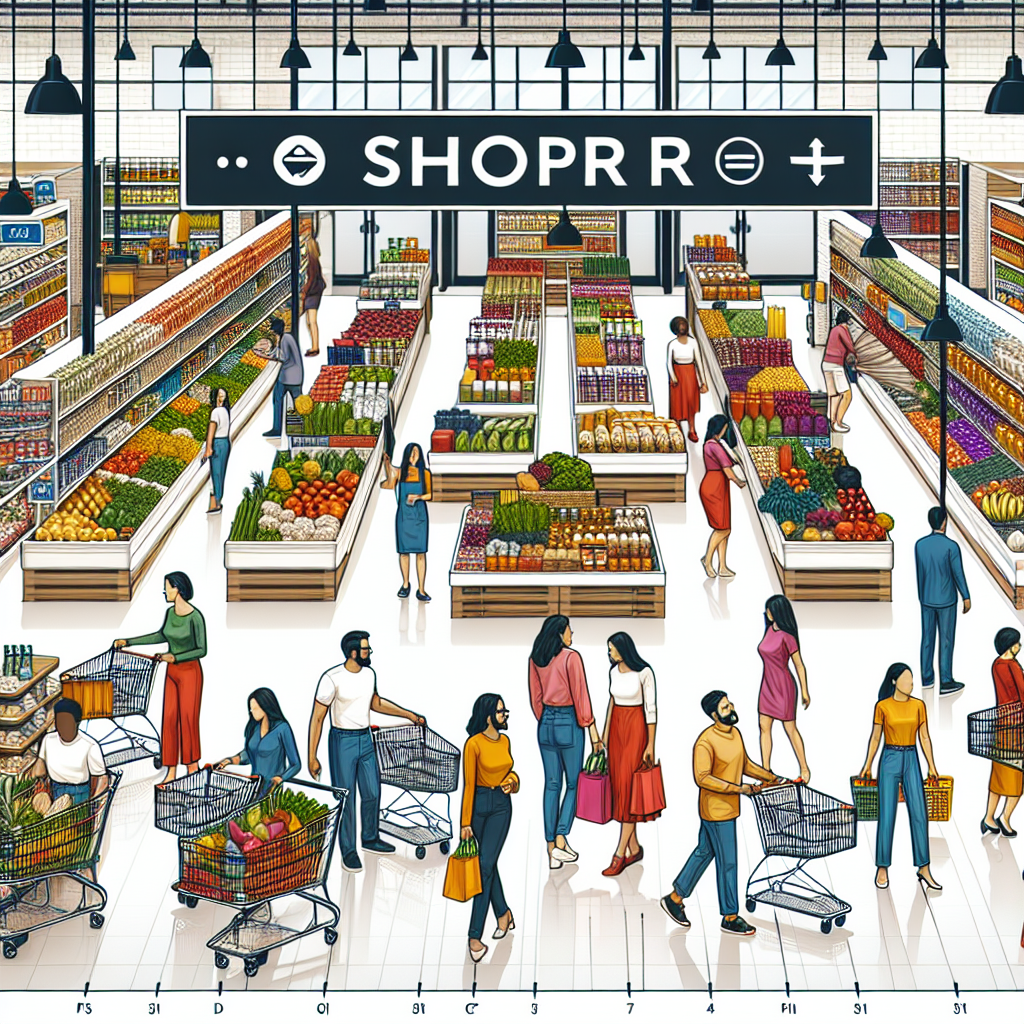The State of the Global Grocery Retail Industry in 2025: Trends, Challenges, and Opportunities
Introduction
The global grocery retail industry is a massive sector that plays a critical role in providing essential goods to consumers around the world. In 2025, the industry is facing a myriad of challenges and opportunities that are shaping its future landscape. This report will delve into the current state of the global grocery retail industry, highlighting key trends, challenges, and opportunities that are driving growth and innovation in the sector.
Market Size and Growth
The global grocery retail industry is a multi-trillion-dollar market that continues to grow steadily year over year. In 2024, the industry was valued at over $8 trillion, with projections indicating further growth in the coming years. The market is dominated by key players such as Walmart, Amazon, and Alibaba, who have a significant market share and influence over consumer purchasing habits.
One of the key trends driving growth in the grocery retail industry is the shift towards online shopping. With the rise of e-commerce platforms and the convenience of home delivery, more consumers are opting to purchase their groceries online. In 2024, online grocery sales accounted for over $500 billion globally, a figure that is expected to increase significantly in the coming years.
Key Players in the Industry
Walmart is one of the largest grocery retailers in the world, with a vast network of stores across the globe. In 2024, Walmart generated over $500 billion in revenue from its grocery division alone, making it a dominant player in the industry. The company has been investing heavily in its e-commerce capabilities, with a focus on expanding its online grocery delivery services to meet the growing demand from consumers.
Amazon is another key player in the global grocery retail industry, with its acquisition of Whole Foods Market in 2017 solidifying its presence in the sector. In 2024, Amazon’s grocery sales surpassed $200 billion, driven by the success of its Amazon Fresh and Amazon Prime Pantry services. The company continues to innovate in the grocery space, with initiatives such as cashier-less stores and drone delivery services.
Alibaba is a major player in the grocery retail industry, particularly in the Chinese market. In 2024, Alibaba’s grocery sales exceeded $150 billion, fueled by the success of its online platforms such as Tmall Supermarket and Freshippo. The company has been leveraging data analytics and artificial intelligence to enhance the shopping experience for consumers and drive sales growth.
Challenges Facing the Industry
While the global grocery retail industry is experiencing significant growth, it also faces a number of challenges that are shaping its future trajectory. One of the key challenges is the rise of competition from new entrants in the market. With the proliferation of e-commerce platforms and the emergence of direct-to-consumer brands, traditional grocery retailers are facing increased competition for market share.
Another challenge facing the industry is the impact of global supply chain disruptions. The COVID-19 pandemic highlighted the vulnerabilities in the grocery supply chain, with disruptions in production, transportation, and distribution leading to shortages and price fluctuations. Retailers are now investing in technology and logistics solutions to improve the resilience of their supply chains and mitigate future disruptions.
Opportunities for Growth
Despite the challenges facing the global grocery retail industry, there are also significant opportunities for growth and innovation. One of the key opportunities is the expansion of online grocery shopping. With the increasing adoption of e-commerce platforms and the convenience of home delivery, retailers have the opportunity to tap into new customer segments and drive sales growth.
Another opportunity for growth in the grocery retail industry is the focus on sustainability and ethical sourcing. Consumers are becoming more conscious of the environmental and social impact of their purchasing decisions, leading retailers to prioritize sustainability initiatives and offer products that are environmentally and socially responsible. Retailers that align with consumer values and demonstrate a commitment to sustainability are well-positioned to attract and retain customers.
Future Outlook
The global grocery retail industry is poised for continued growth and evolution in the coming years. As consumer preferences and shopping habits continue to evolve, retailers will need to adapt and innovate to meet changing demands. The shift towards online shopping, the focus on sustainability, and the rise of new technologies such as artificial intelligence and data analytics will shape the future of the industry.
In conclusion, the global grocery retail industry is a dynamic and competitive sector that is experiencing significant growth and transformation. With the right strategies and investments, retailers can capitalize on the opportunities presented by changing consumer trends and drive sustainable growth in the years to come.
References:
1. CulinaryCoverage.com – The State of the Global Grocery Retail Industry in 2025: Trends, Challenges, and Opportunities. Available at: https://culinarycoverage.com/2025/02/the-state-of-the-global-grocery-retail-industry-in-2025-trends-challenges-and-opportunities/
2. Statista – Global grocery retail sales 2024. Available at: https://www.statista.com/statistics/1109085/global-grocery-retail-sales/
3. Forbes – Walmart’s grocery revenue in 2024. Available at: https://www.forbes.com/walmart-grocery-revenue-2024/
4. CNBC – Amazon’s grocery sales in 2024. Available at: https://www.cnbc.com/amazon-grocery-sales-2024/
5. Bloomberg – Alibaba’s grocery sales in 2024. Available at: https://www.bloomberg.com/alibaba-grocery-sales-2024/


